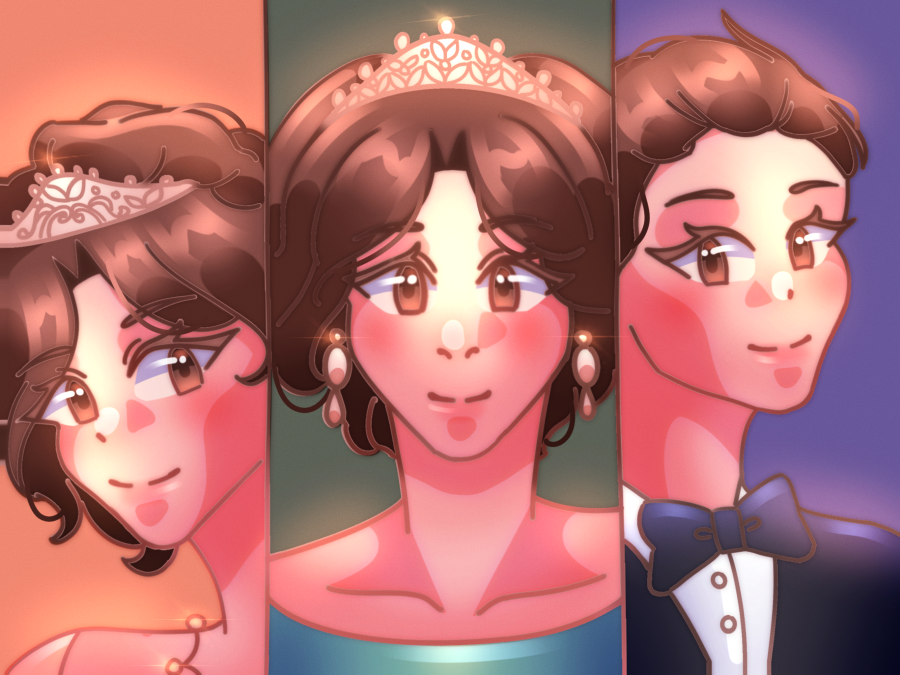Netflix released the trailer for the much-anticipated fifth season of “The Crown” on Oct. 20 and an immediate firestorm occurred; numerous people expressed anger and alarm at the myriad of historical inaccuracies depicted.
I can’t say I’m particularly surprised, though. “The Crown” has always been a fictionalized dramatization of history, and the only difference between Season 5 and the previous four is that many real people depicted, such as John Major, are alive and able to voice their displeasure.
But regardless of historical accuracy, the writers and producers behind “The Crown” have created an extraordinary narrative, not only of the British Royal Family but of the entire latter half of the 20th century.
For those who haven’t heard of the international sensation that has won a jaw-dropping 129 awards: “The Crown” details the history of the British royal family through the life of the late monarch Elizabeth II, starting with her wedding to Prince Phillip in 1947.
The show depicts countless trials and tribulations faced by members of the royal family throughout history, mainly focusing on three principal characters: Queen Elizabeth, Princess Margaret and Prince Charles.
In addition, the show heavily features the British Prime Ministers who served under Elizabeth II, most notably Winston Churchill, Harold Wilson and Margaret Thatcher, each of whom provides fresh commentary and perspectives on not just the royal family but British and Commonwealth society as a whole.
Each individual character shines, but together they create a narrative unparalleled in complexity and nuance. The role that each member of the Royal Family plays is cleanly and elegantly distinguished not only with dialogue and action but also through visual features.
The Queen, representing stability and authority, rarely shows any other facial expression besides a light frown. Princess Margaret shows her modernity and breaks from tradition with bold eyeliner and clothing with dazzling patterns, while Prince Charles, representing the new generation, adopts a less formal, more natural way of speaking.
The show also switches cast members every two seasons as the principal characters age, not only for historical continuity’s sake but also to represent how the characters have changed and matured. This contrast is best shown by Claire Foy and Olivia Colman, who portray a younger and middle-aged Queen Elizabeth II respectively. While Foy’s depiction shows a young woman finding her place after being suddenly thrust upon the throne, Colman portrays the Queen as a stoic, established middle-aged woman, well adjusted to the life of a monarch.
In addition to the Royal Family members, each of Queen Elizabeth II’s Prime Ministers also add their own perspective to the show. When combined, these two parts of the show create a narrative truly unparalleled in complexity, subtlety and intricacy.
And it is the contrast between the Queen and Britain’s first female Prime Minister, Margaret Thatcher in Season 4 that is the most fascinating and captivating of all.
Compared with the previous Prime Ministers, Thatcher comes from a middle-class background, and her disagreements with the Queen are a remnant of this class distinction. For example, when the Queen tells Thatcher about how she hunted with her father for fun and subsequently asks Thatcher what she did with her father as a child, Thatcher simply responds, “We worked,” with a perfect hint of condescension and disdainful view of the frivolity of the British upper class. This direct juxtaposition between the two women in their opinions sets the scene for their mutually respectful but ultimately tense relationship.
So despite not being a factual documentary, “The Crown” masterfully captures a half-century of British history. However, I’d like to note that I agree with many critics of the show that the historical inaccuracies are problematic.
For example, the Queen was reportedly “hurt” by the show’s depiction of her husband as a cold and uncaring father, particularly during a scene in Season 2 where he calls Prince Charles “bloody weak.” This potentially constitutes character assassination. Especially considering a significant percent of viewers are using the show to learn about the Royals, viewers should take any claim made in the show with a grain of salt.
Netflix eventually gave in and Season 5 will feature disclaimers before each episode reminding the audience that the show is indeed a dramatization. I won’t have yet finished watching the latest season by the time this review is released, but based on the trailer and clips already released, it looks to be an excellent one. So when you’ve got a free hour or two, give the series a watch. I promise you won’t regret it.
Editor’s Note: This article was written before Season 5 was released on Wednesday, Nov. 9














